Accepted Scientific Name: Echinocereus subinermis subs. ochoterenae (J.G.Ortega) N.P.Taylor
Cactaceae Consensus Init. 3: 10. 1997
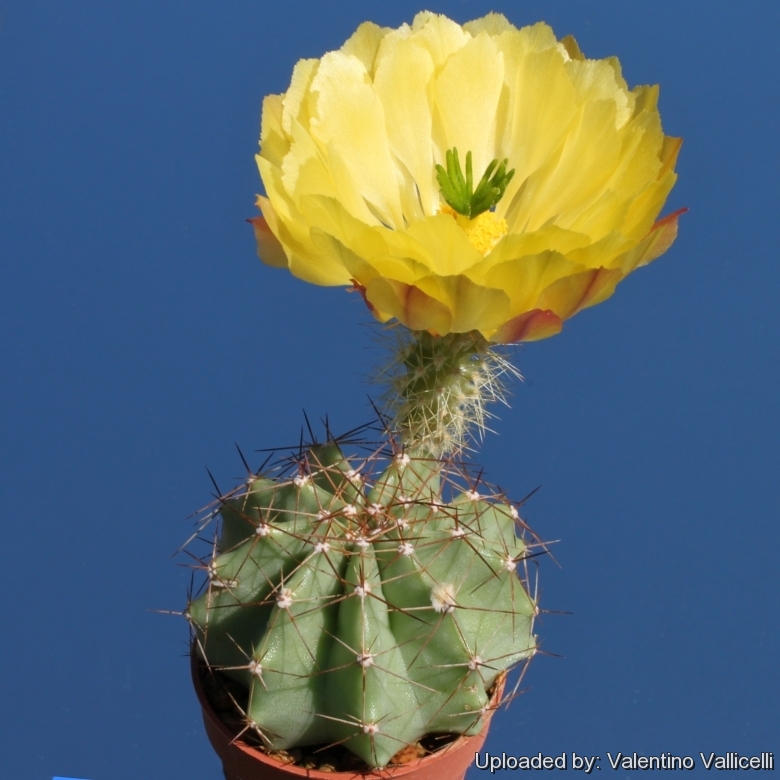
Echinocereus subinermis var. ochoterenae (Echinocereus subinermis subs. ochoterenae) Photo by: Valentino Vallicelli
Origin and Habitat: Mexico (Sinaloa: Cerro de la Cobriza)
Altitude: 50-500 metres above sea level.
Habitat: The species grows in wood clearings and in crevices on rocky slopes in loamy- sandy soil and igneous rocks.
together with Selenicereus vagansSN|8276]]SN|8276]], Pachyceerus pecten-aboriginum, Mammillaria rubidaSN|9256]]SN|23732]] and Mammillaria mazatlanensisSN|23732]]SN|9256]].
Synonyms:
See all synonyms of Echinocereus subinermis
Description: Echinocereus subinermisSN|16544]]SN|16544]] var. ochoterenae is one of the varieties of the wide ranging and very variable Echinocereus subinermisSN|16544]]SN|16544]] distinguished for its thick, slightly elongated and always spiny stems. It has about 10 ribs with 1-4 short dark central spines. The flowers are very showy, canary yellow but smaller than in the other varieties of Echinocereus subinermisSN|16544]]SN|16544]].
Habit: Cylindrical cactus, at first simple but usually clustering with time from the base.
Stem: When young pale green, afterwards bluish green and finally darker green with occasionally some reddish areas, 4-10 cm tall,4-7 cm in diameter.
Ribs: 8-11 (mostly 10) slightly notched with narrow furrows between them, broad somewhat sinuate, rounded.
Areoles: Small, slightly woolly, 10 mm apart.
Spines: Younger plants have short spines while older ones are almost spineless.
Central spines: 1 to 4 (Usually absent in standard Echinocereus subinermisSN|16544]]SN|16544]]) mostly very short, occasionally up to 2 cm long, dark porrect.
Radial spines: 8 or 9, widely spreading, small, unequal, conic, the 2 upper ones being shorter, 5-10 mm long, yellowish, or creamishi with a darker tip, deciduous.
Flowers: Funnelform, from near the top of plant, and from second to third areoles on the ribs, showy up to 4,5-6,5 cm long and 4,7,5 cm in diameter (up to 13 cm broad in standard Echinocereus subinermisSN|16544]]SN|16544]]), perianth segments oblanceolate, acute, canary-yellow delicately sweet-scented, often with some reddish midstripes. Stigma with 8-11 green lobes. Filaments light yellow. Spines of areoles on ovary and flower-tube short, white to brown with scarce white wool..
Blooming season: Spring and summer. The individual flowers will last up to six days. Blooming generally begins 4 to 5 years after sowing, as the plant matures.
Fruit: Obovoid, up to 2 cm long, spiny, dark grey-green with white pulp, deciduous by a longitudinal split.
Subspecies, varieties, forms and cultivars of plants belonging to the Echinocereus subinermis group
 Echinocereus subinermis Salm-Dyck in Seem. ex Scheer: with usually solitary stems (or with very few branches) often spineless with 5-9 ribs. the floral tube is only slightly woolly (from northern Sinaloa, southern Sonora, south-western Chihuahua)
Echinocereus subinermis Salm-Dyck in Seem. ex Scheer: with usually solitary stems (or with very few branches) often spineless with 5-9 ribs. the floral tube is only slightly woolly (from northern Sinaloa, southern Sonora, south-western Chihuahua) Echinocereus subinermis var. luteus (Britton & Rose) F.M.Knuth: from Sonora and Sinaloa, is generally solitary, has 8 or 9 ribs, no central spine, 6 to 8 radials, up to 8 mm long.
Echinocereus subinermis var. luteus (Britton & Rose) F.M.Knuth: from Sonora and Sinaloa, is generally solitary, has 8 or 9 ribs, no central spine, 6 to 8 radials, up to 8 mm long. Echinocereus subinermis subs. ochoterenae (J.G.Ortega) N.P.Taylor: With branched stems, always spiny with 8 to 11 ribs. the flower tube is noticeably woolly (From northern Sinaloa).
Echinocereus subinermis subs. ochoterenae (J.G.Ortega) N.P.Taylor: With branched stems, always spiny with 8 to 11 ribs. the flower tube is noticeably woolly (From northern Sinaloa). Echinocereus subinermis cv. Spiral: has spiral schaped ribs.
Echinocereus subinermis cv. Spiral: has spiral schaped ribs.
Bibliography: Major references and further lectures
1) Edward Anderson “The Cactus family” Timber Press, Incorporated, 2001
2) Nathaniel Lord Britton, Joseph Nelson Rose “Cactaceae: Descriptions and Illustrations of Plants of the Cactus Family” vol. 4 The Carnegie Institution of Washington, Washington 1923
3) James Cullen, Sabina G. Knees, H. Suzanne Cubey "The European Garden Flora Flowering Plants: A Manual for the Identification of Plants Cultivated in Europe, Both Out-of-Doors and Under Glass" Cambridge University Press, 11/Aug/2011
12) David R Hunt; Nigel P Taylor; Graham Charles; International Cactaceae Systematics Group. "The New Cactus Lexicon" dh books, 2006
13) Hernández, H.M., Gómez-Hinostrosa, C. & León de la Luz, J.L. 2013. Echinocereus subinermis. In: IUCN 2013. "IUCN Red List of Threatened Species." Version 2013.1. <www.iucnredlist.org>. Downloaded on 24 October 2013.
14) Flora of North America Editorial Committee “Flora of North America: North of Mexico. Magnoliophyta: Caryophyllidae, part 1” Oxford University Press, 1993
15) Karl Schumann “Blühende Kakteen. Iconographia Cactacearum.” Im Auftrage Der Deutschen Kakteen-Gesellschaft Herausgegeben Von Prof. Dr. Karl Schumann (Prof. Dr. Max Gürke, Dr. F. Vaupel). 1900
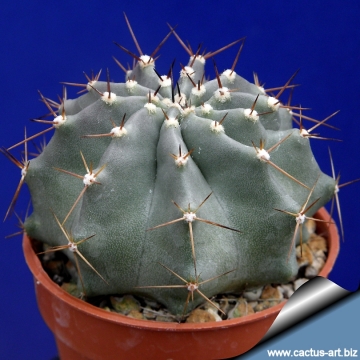 Echinocereus subinermis var. ochoterenae (Echinocereus subinermis subs. ochoterenae) Photo by: Cactus Art
Echinocereus subinermis var. ochoterenae (Echinocereus subinermis subs. ochoterenae) Photo by: Cactus Art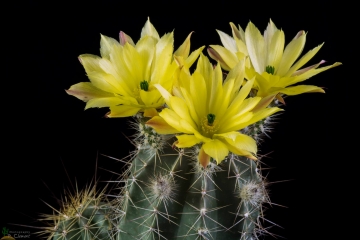 Echinocereus subinermis var. ochoterenae (Echinocereus subinermis subs. ochoterenae) Photo by: Peiffer Clement
Echinocereus subinermis var. ochoterenae (Echinocereus subinermis subs. ochoterenae) Photo by: Peiffer Clement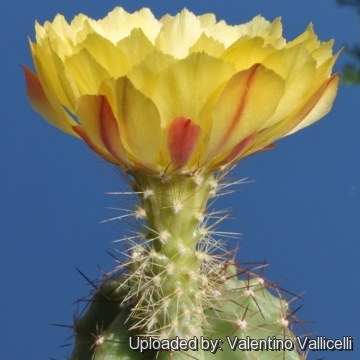 Echinocereus subinermis var. ochoterenae (Echinocereus subinermis subs. ochoterenae) Photo by: Valentino Vallicelli
Echinocereus subinermis var. ochoterenae (Echinocereus subinermis subs. ochoterenae) Photo by: Valentino Vallicelli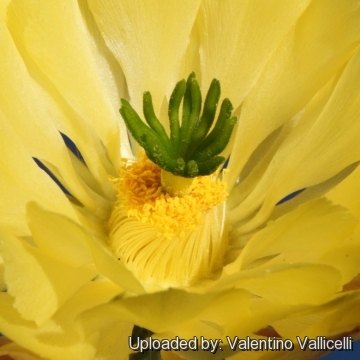 Echinocereus subinermis var. ochoterenae (Echinocereus subinermis subs. ochoterenae) Photo by: Valentino Vallicelli
Echinocereus subinermis var. ochoterenae (Echinocereus subinermis subs. ochoterenae) Photo by: Valentino Vallicelli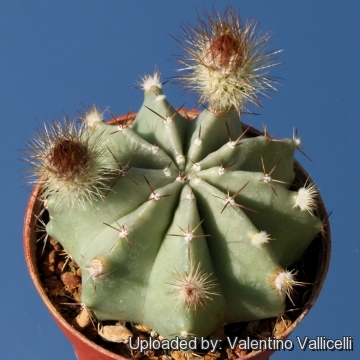 Echinocereus subinermis var. ochoterenae (Echinocereus subinermis subs. ochoterenae) Photo by: Valentino Vallicelli
Echinocereus subinermis var. ochoterenae (Echinocereus subinermis subs. ochoterenae) Photo by: Valentino Vallicelli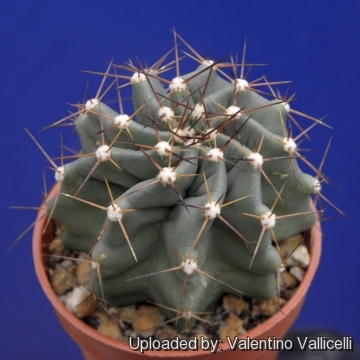 Echinocereus subinermis var. ochoterenae (Echinocereus subinermis subs. ochoterenae) Photo by: Valentino Vallicelli
Echinocereus subinermis var. ochoterenae (Echinocereus subinermis subs. ochoterenae) Photo by: Valentino Vallicelli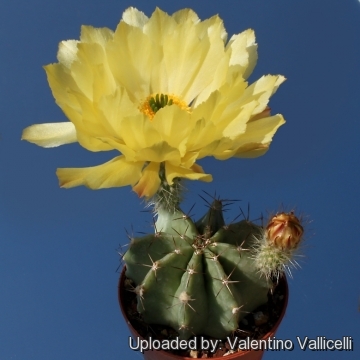 Echinocereus subinermis var. ochoterenae (Echinocereus subinermis subs. ochoterenae) Photo by: Valentino Vallicelli
Echinocereus subinermis var. ochoterenae (Echinocereus subinermis subs. ochoterenae) Photo by: Valentino VallicelliSend a photo of this plant.The gallery now contains thousands of pictures, however it is possible to do even more. We are, of course, seeking photos of species not yet shown in the gallery but not only that, we are also looking for better pictures than those already present.
Read More... Cultivation and Propagation: This cactus is cultivated and highly priced for its flowers. It is among the easiest species to grow, flower and propagate.
Waterings: Water regularly from March to October. Rot prone in winter, it needs good drainage.
Hardiness: It can not tolerate much frost. Frost Tolerance: Hardy to -2° C.
Exposition: It does not like full harsh sun as it seems to have a delicate skin and few spines, so give it a protected position in the partial-shade or under filtered sun.
Propagation: Seeds (usually), it also can be grown from cuttings, as it can branch from the base.

















